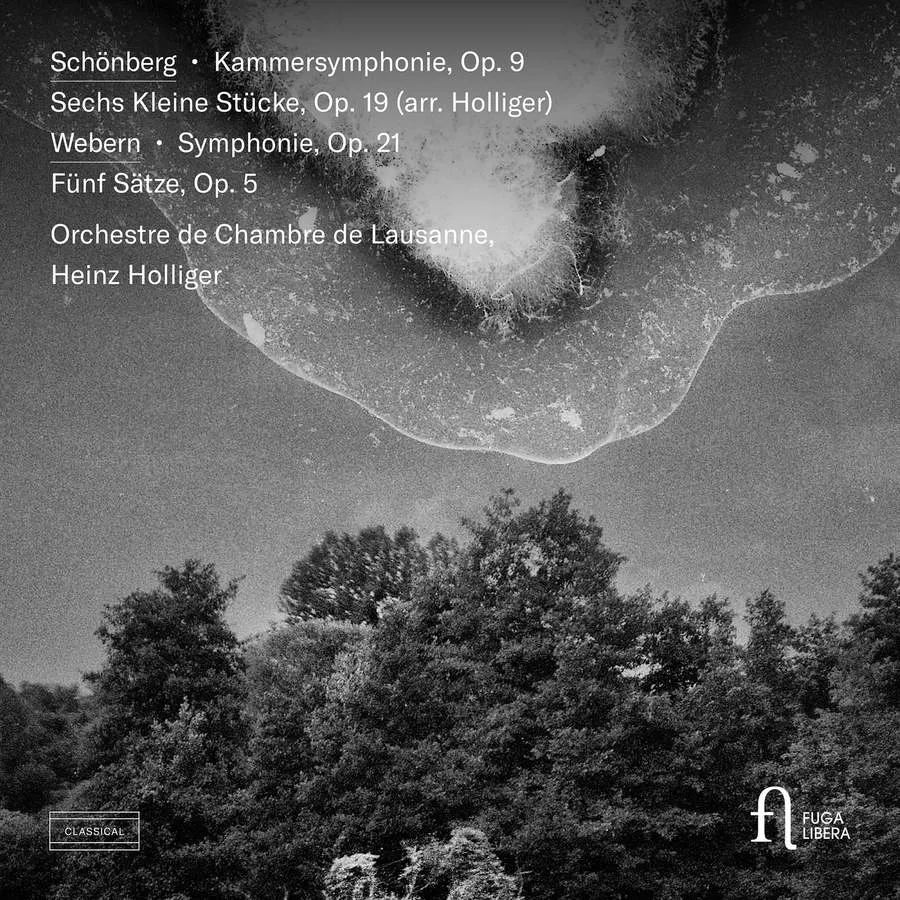
Schoenberg • Webern Schoenberg: Kammersymphonie, Op. 9; Sechs Kleine Stücke, Op. 19 (arr. Holliger); Webern: Symphony, Op. 21; Fünf Sätze, Op. 5 Orchestre de Chambre de Lausanne/Heinz Holliger Fuga Libera FUG794 53:22 mins
Schoenberg’s Chamber Symphony Op. 9, beginning with its horn calls striding up energetically in fourths, is one of the most exhilarating pieces he ever composed. It’s in one of those continuous designs he favoured in his earlier years, from Verklärte Nacht onwards, forging the traditional movements of a symphonic form into a unified whole. It calls for considerable virtuosity from each of its 15 solo players, and the Lausanne Chamber Orchestra under Heinz Holliger acquits itself very well. There have perhaps been even more incisive performances – Simon Rattle and the Birmingham Contemporary Music Group on EMI, for instance – but Holliger and his players reveal every detail of the complex score, even if it’s at the expense of a slightly over-analytical recording. Rattle’s more generous acoustic lends the music a warmth that isn’t always there in this new recording.
Holliger gives a meticulous account of Webern’s enigmatic Symphony Op. 21, with its intimate series of canons; and the same composer’s Five Movements Op. 5, more familiar in their original string quartet version, also come off well. But perhaps the most fascinating item here is Holliger’s own arrangement for chamber orchestra of Schoenberg’s Six Little Piano Pieces Op.11, so imaginatively and inventively done that they almost amount to entirely new pieces. Particularly effective are the menacingly growling basses in the slow third piece; and the final number, inspired by Mahler’s funeral in 1911 (Schoenberg also painted a picture of the event), where Holliger transforms the distant resonance of bells into something very different but no less haunting.
Misha Donat
More reviews
- Daniel-Ben Pienaar’s captivating musical odyssey across 17th-century Europe
- Kristian Bezuidenhout delivers invigorating performances of Beethoven’s concertos
- The myth of Ariadne brought to life in Baroque cantatas
- A rich, innovative interpretation of Bach’s Well-Tempered Clavier
- Federico Colli captures the concept of opposition in Scarlatti’s Piano Sonatas
- Nordic and North African elements combine to thrilling effect
